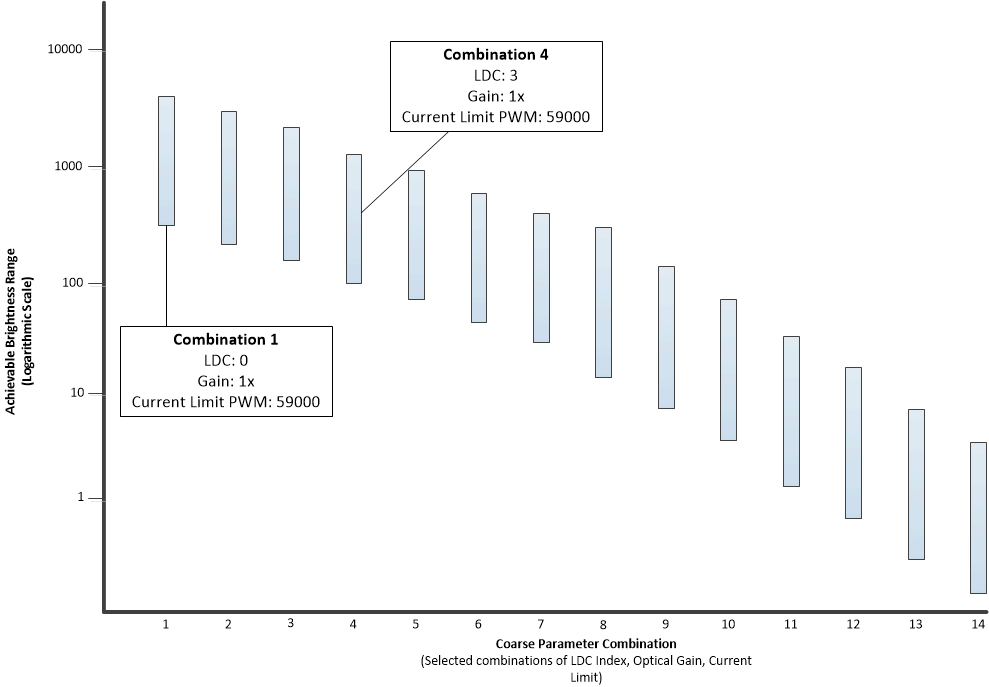DLPU066A March 2018 – April 2022 DLP3030-Q1
4.2.2 Coarse Adjustment Parameter Combinations
Each coarse adjustment parameter combination, or coarse combination, consists of a unique combination of LDC Index, optical sensor amplifier gain, and current limit. Each coarse combination can achieve a certain range of brightness. A combination achieves its maximum brightness when all the fine adjustment parameters (LED PWMs) are set to their maximum values. Similarly, in order to achieve minimum brightness with this combination, the LED PWM levels should be set to their minimum values. By switching between several combinations of coarse adjustment parameters, the system is capable of achieving a very wide brightness range. Figure 4-1 below shows an example of the brightness range that is achievable using multiple coarse adjustment parameter combinations.
 Figure 4-1 Logarithmic Brightness Ranges for Coarse Adjustment Parameter Combinations
Figure 4-1 Logarithmic Brightness Ranges for Coarse Adjustment Parameter CombinationsNotice that the brightness ranges of many of the combinations overlap. This prevents gaps in the brightness range that can be covered. Additionally, it allows a brightness range to be achieved without approaching the minimum or maximum limit of a combination's range. This is beneficial because it may be difficult to achieve a desired color point using the minimum or maximum limit of a combination's brightness. For more information on picking the correct coarse combinations, see Section 5.2.